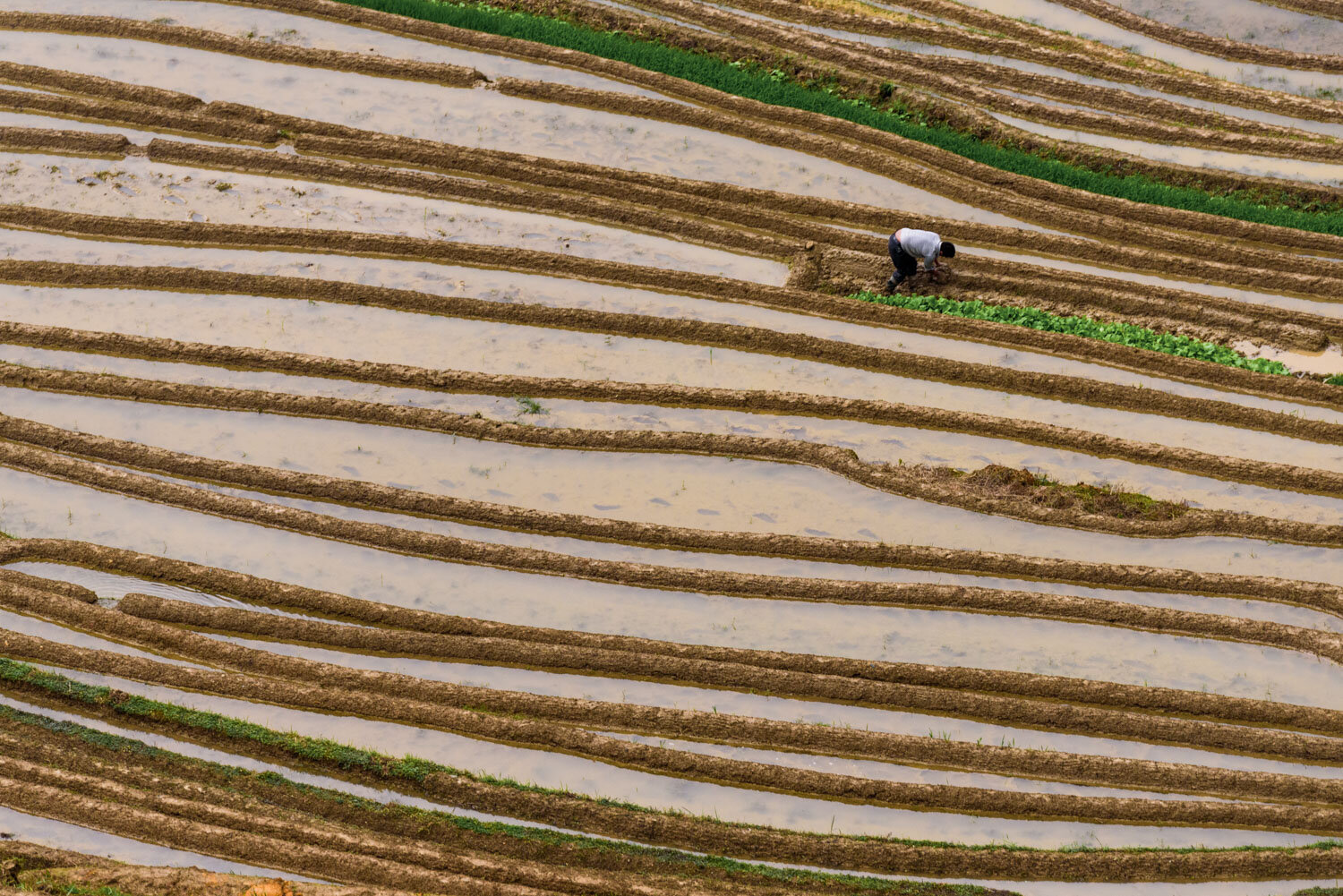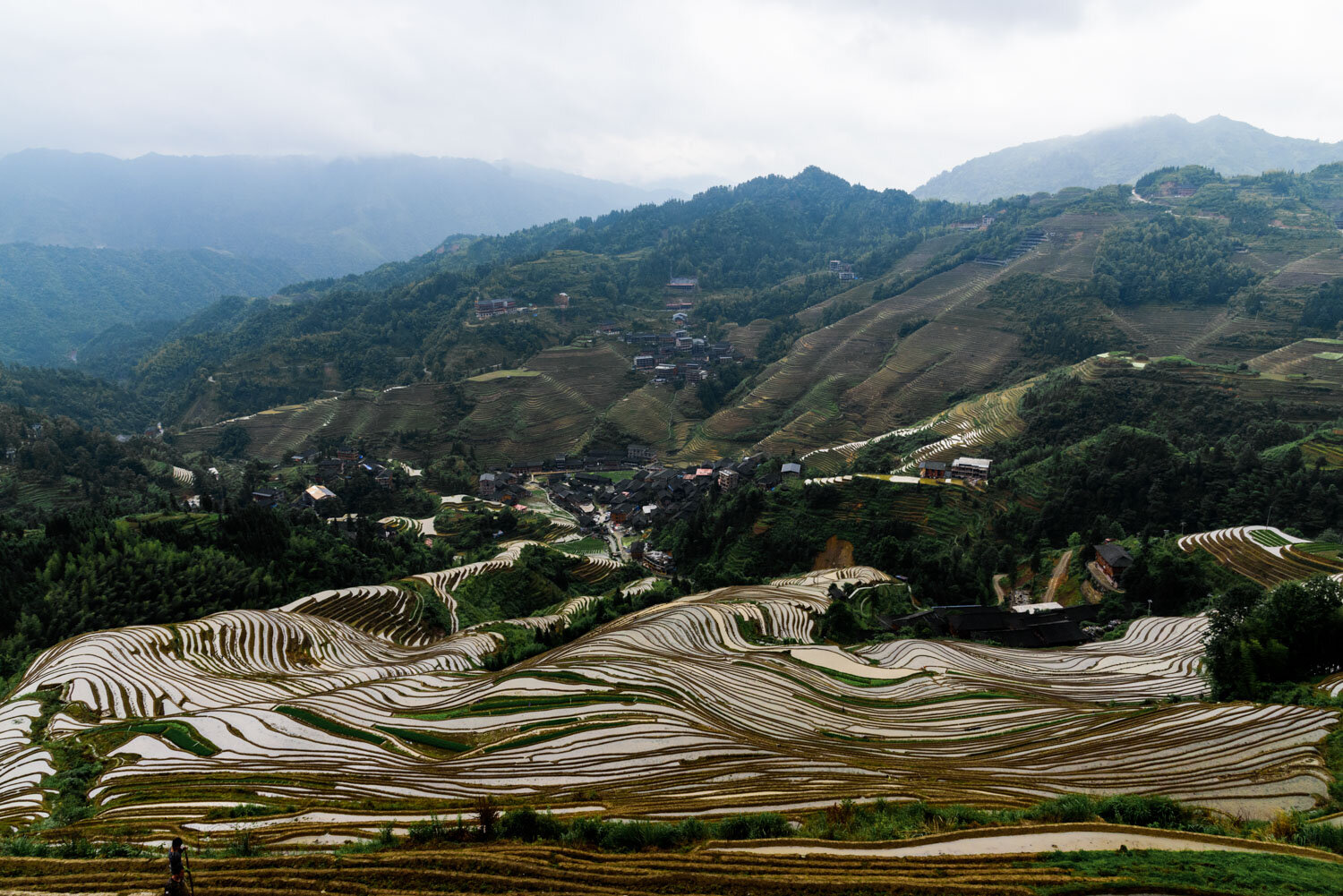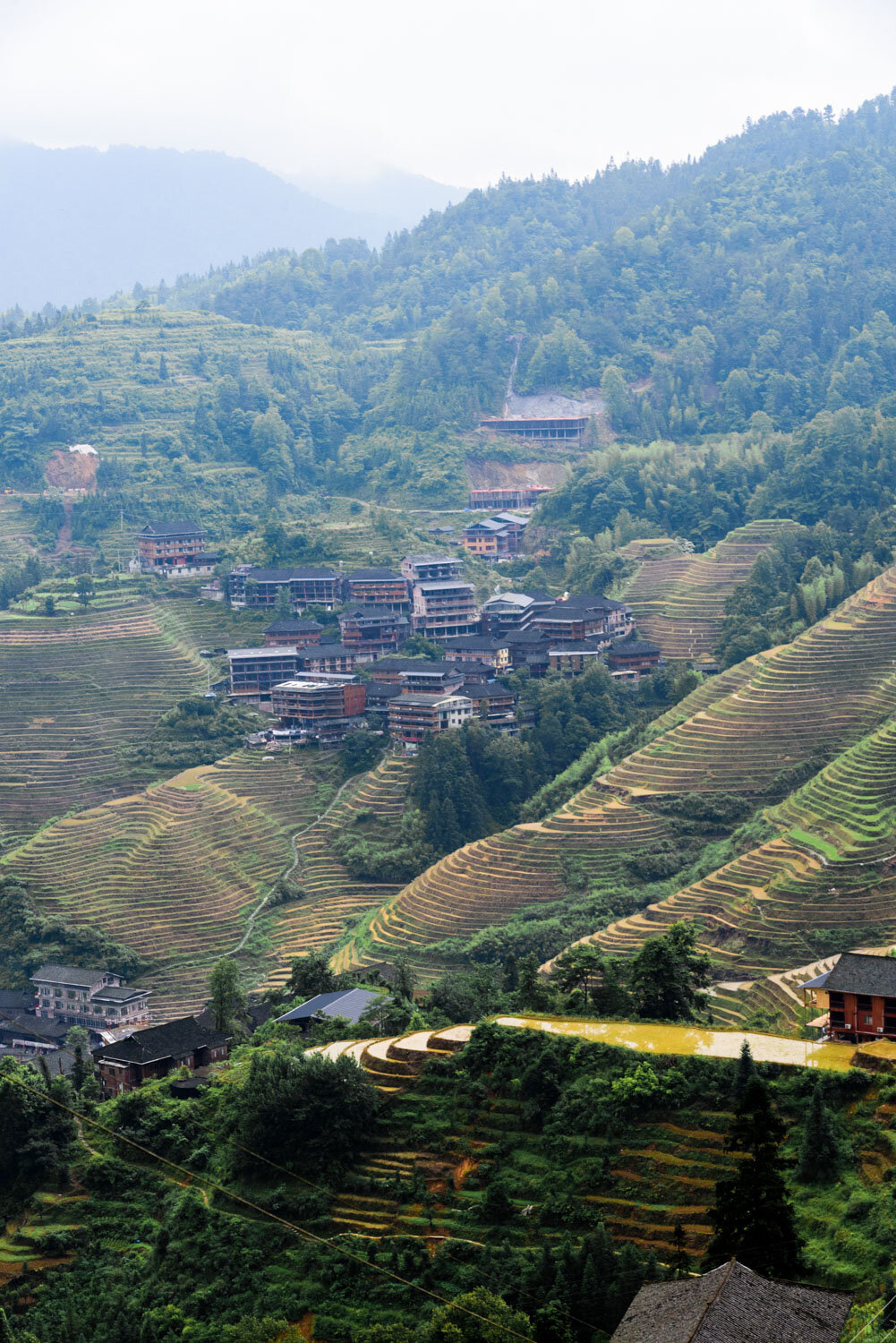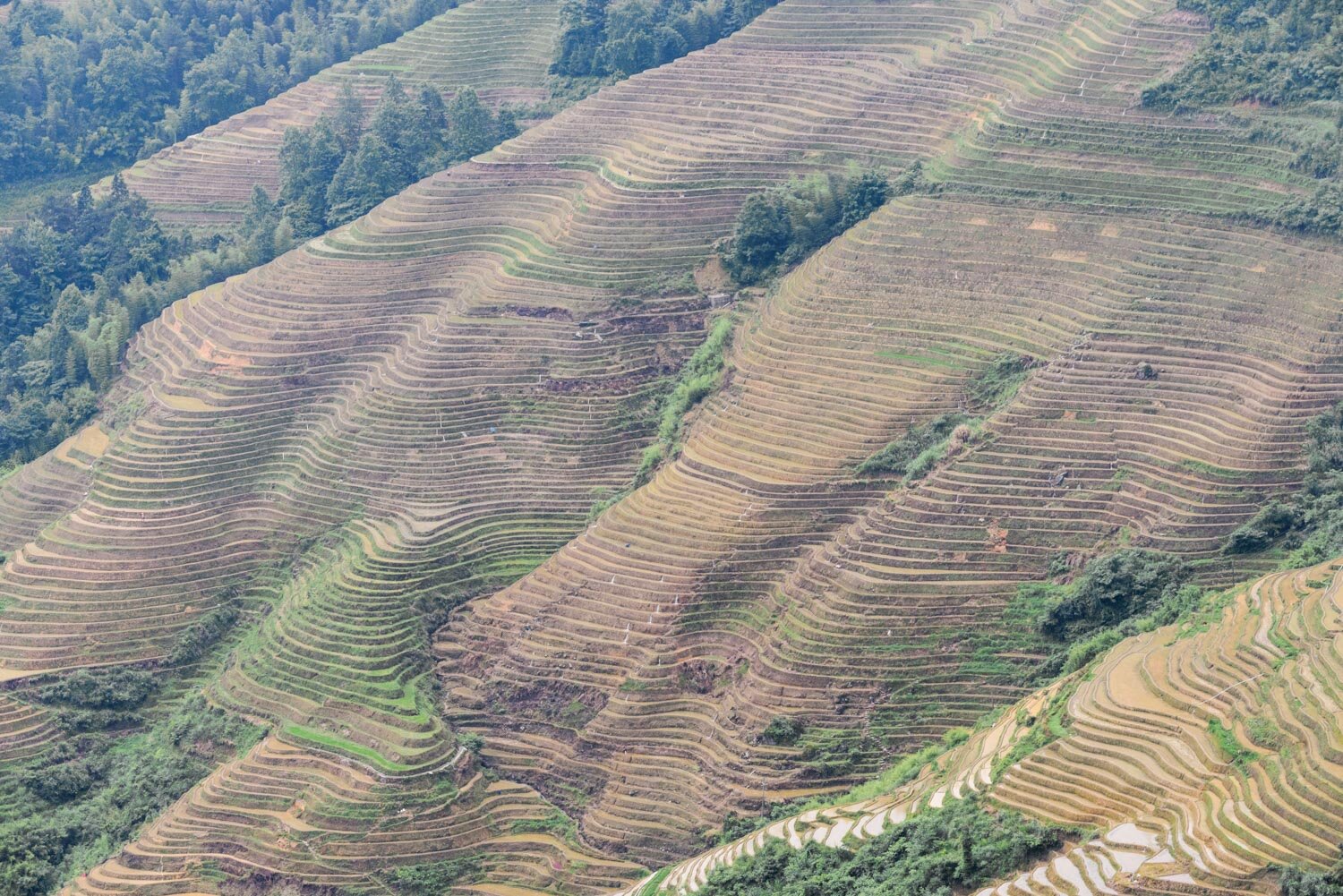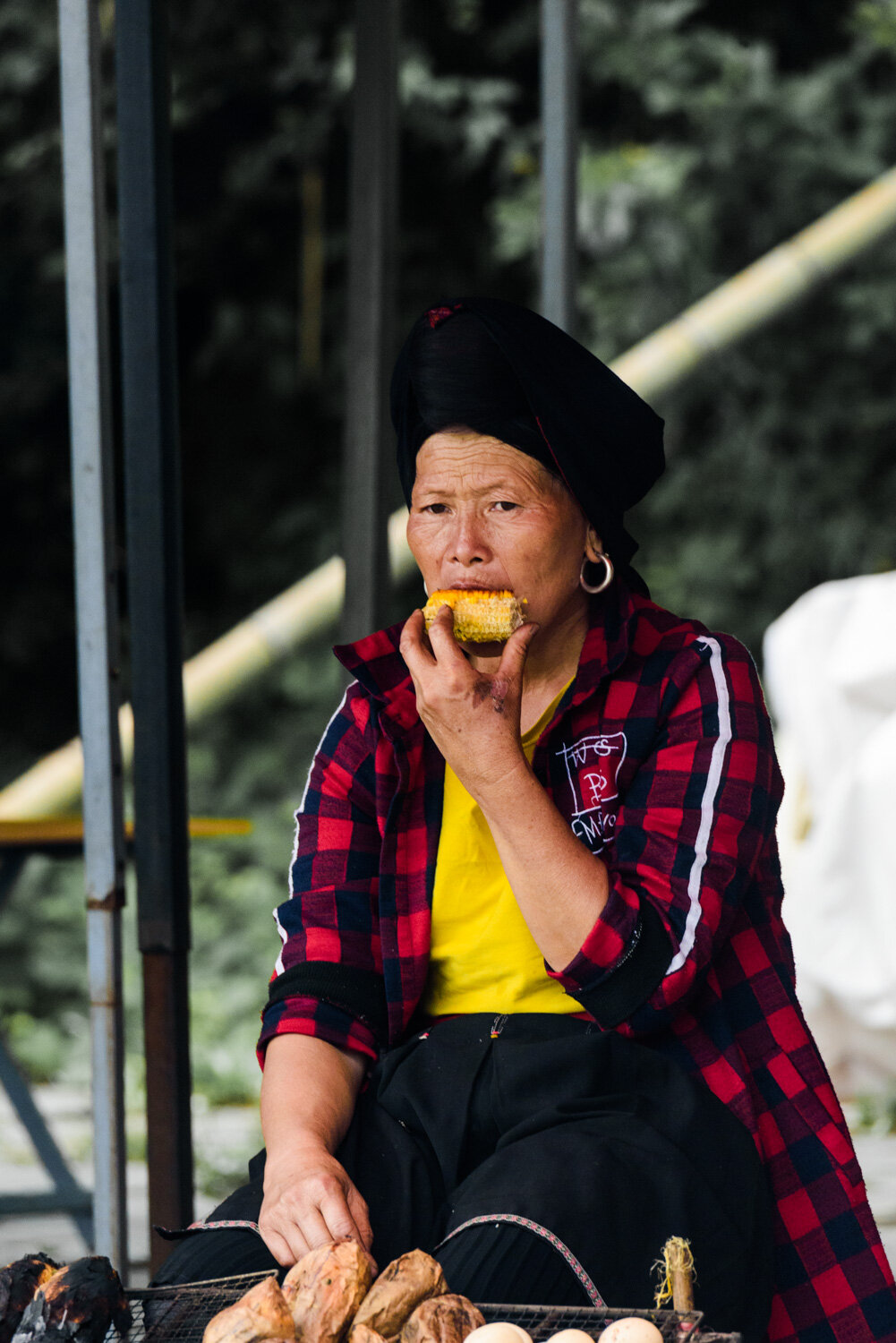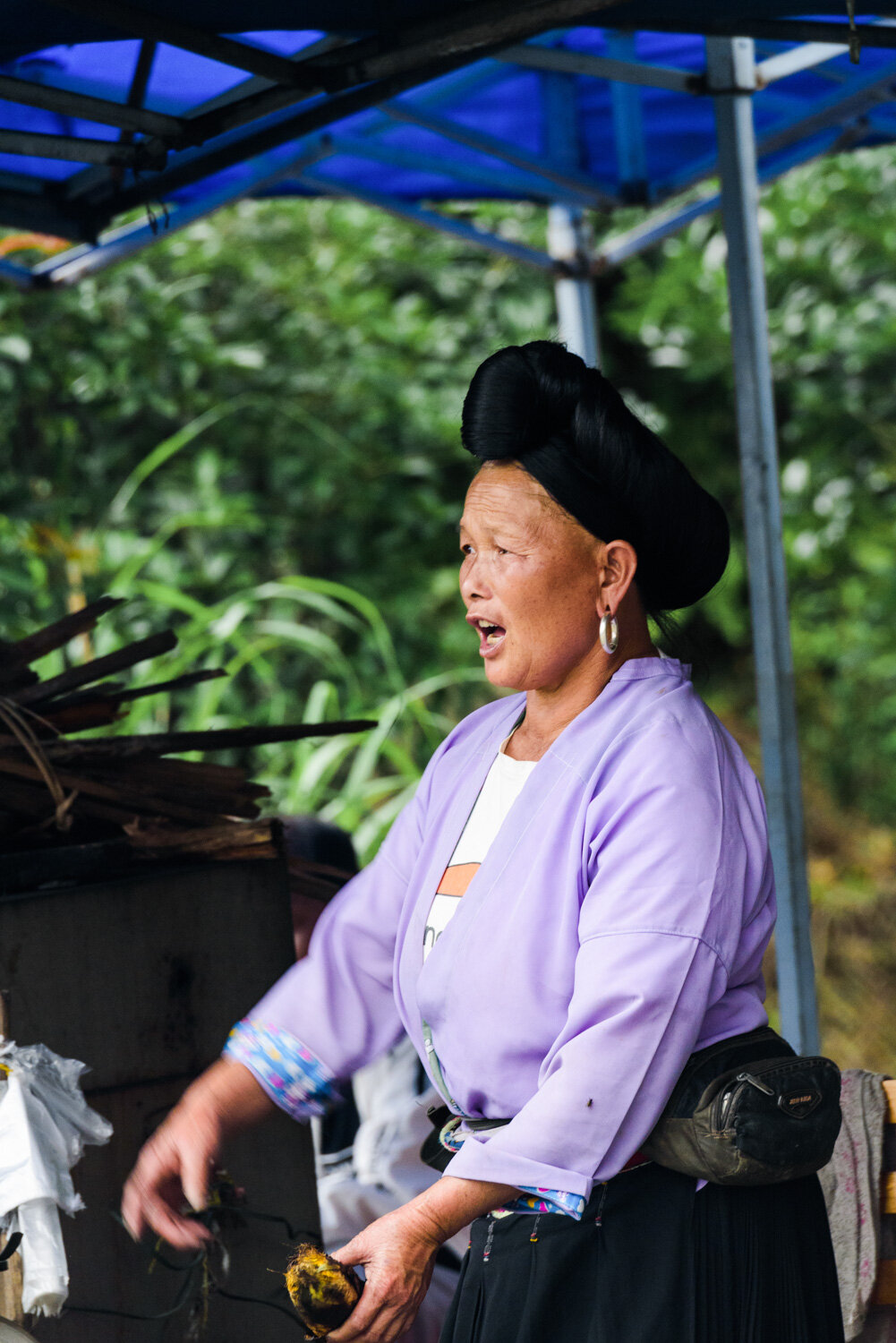Longji: staircases through villages and rice fields
It is impossible to choose the right season to visit a rice field. During the rainy season, when everything is green and lush, when the emerald threads of the rice plants are almost a metre high and create a soft mantle on the terraces, when the rice fields are prepared, and although bare, are populated by farmers who, in the shade of their tapered hats and with their bare legs immersed in the mud, place the plants in rows; During the dry season, before harvesting, when the rice plants turn yellow, and then the valleys are colored with golden slopes. When the sun and everything shines, or when the humidity of the rain creates trails of fog that invade the valleys and serve as a backdrop to the ridges.
After visiting more than one rice field, and not only in China, I still have no answer. On the plus side, whatever season you choose for your trip, including a stop in the rice fields will always be an unforgettable experience.
The Longji rice fields are located north of Guilin, about a 2 hour drive away. They are easily reached by bus, although with a turbulent journey through remote villages with narrow, uneven roads. Once you arrive at the village of Hepingxiang, where the ticket office is located, the journey continues for the last half hour in a small road that runs along the gorge of a river. The villages you pass through are very picturesque and characteristic, small clusters of huge houses covered with wooden tiles. The local population is part of a protected ethnic minority in China, the Yao, recognizable by the extravagant hairstyles of women who have extremely long hair (never cut from birth) rolled up in a headgear with frontal chignon.
The entrance to the rice fields is marked by a small town with a few shops and access to the funicular, which as everywhere in China, makes it very easy (and very little picturesque) access to tourist attractions. With a walk of about 15' you arrive undisturbed to the village of the valley of Longji. Most visitors opt to climb directly to the observation point by funicular, which is a huge advantage for those like us, however, has chosen to go up the rice fields on foot, enjoying the silence and peace that reigns in these isolated valleys. The village is again a set of wooden houses and some bed & breakfasts that serve food and tea.
The villagers will offer you a local tea made from the fruits of the Luo Han Guo plant, a product that you will find dried, on sale in many local markets, native and exclusive to the valleys of Guanxi. It is a fruit similar in shape to a Kiwi, smooth on the outside, which is dried and then infused, breaking the outer shell, to make a tea that has a vague aftertaste of licorice.
Reaching the highest panoramic point requires a very pleasant 1 hour walk, which slowly crosses narrow alleys between the houses, stairs carved out of the terraces of the rice fields, some path on the edge of the terraces. The view is spectacular everywhere, with other small towns set on the ridges. Once at the top, a panoramic terrace looks down on the whole valley, and, during the period in which we visited Longji, in June, it offers a postcard made of mirrors of water that draw the rice fields and cloud flakes that cross the valley of a dull green. Near the panoramic platform some local inhabitants roast meat and cobs, and sell some souvenirs to tourists who land from the cable car, fortunately hidden between the hills and vegetation. You descend along an endless stone staircase that crosses the opposite side of the promontory in the middle of the valley, and return to the main access road.


